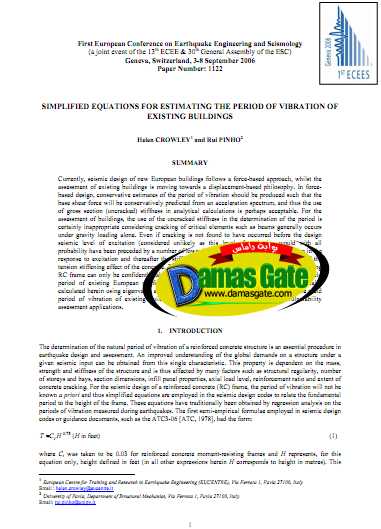Simplified equation for estimating periods of vibration of concrete wall housing
1. INTRODUCTION The determination of the natural period of vibration of a reinforced concrete structure is an essential procedure in earthquake design and assessment. An improved understanding of the global demands on a structure under a given seismic input can be obtained from this single characteristic. This property is dependent on the mass, strength and stiffness of the structure and is thus affected by many factors such as structural regularity, number of storeys and bays, section dimensions, infill panel properties, axial load level, reinforcement ratio and extent of concrete cracking. For the seismic design of a reinforced concrete (RC) frame, the period of vibration will not be known a priori and thus simplified equations are employed in the seismic design codes to relate the fundamental period to the height of the frame. These equations have traditionally been obtained by regression analysis on the periods of vibration measured during earthquakes. The first semi-empirical formulae employed in seismic design codes or guidance documents, such as the ATC3-06 [ATC, 1978], had the form:

Download
http://s18.alxa.net/s18/srvs2/02/001...ll.housing.rar